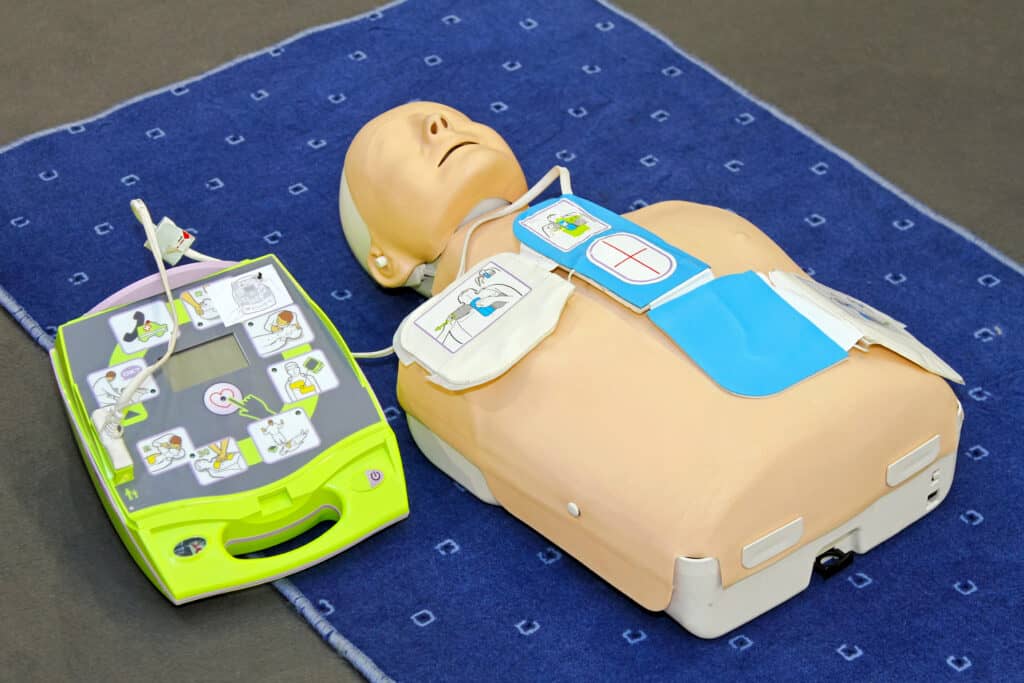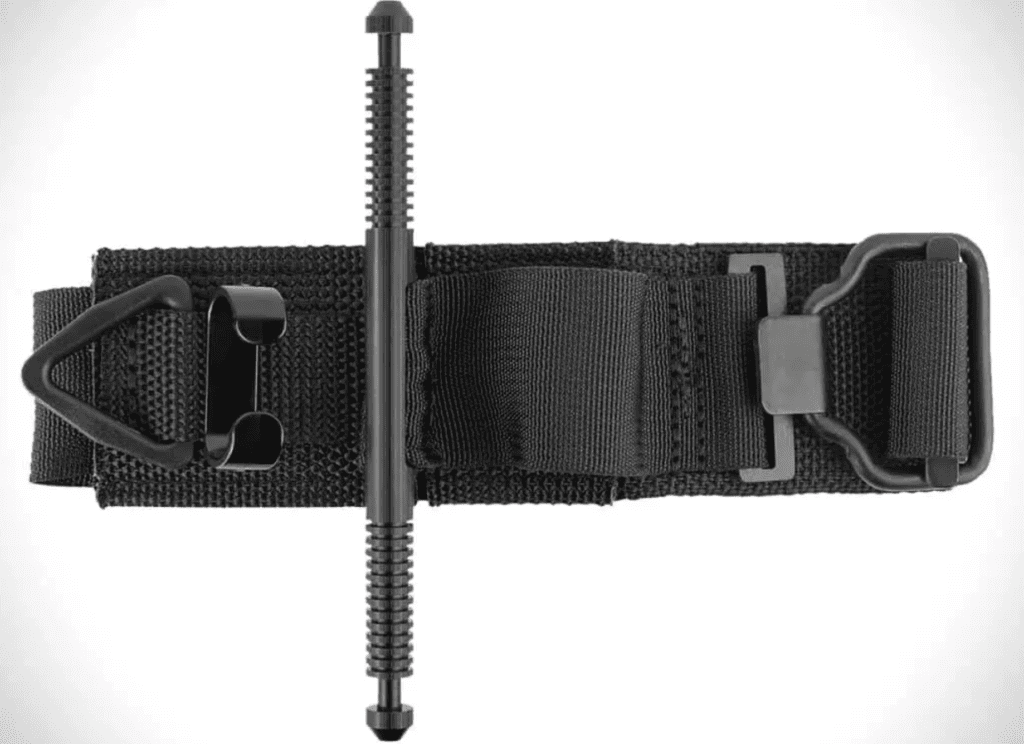TEC 38.030 Traumatic Injury Response Protocol is a regulation designed to help Texas schools be better prepared for situations involving traumatic injuries.
It requires each Texas school district and open-enrollment charter school to develop and annually make available a protocol for school employees and volunteers to follow in case of a traumatic injury.
This protocol is crucial in ensuring that schools have a systematic and informed response to emergency situations, which can be lifesaving when every second counts.
As part of this regulation, schools are required to maintain and make available bleeding control stations, which are to be stored in accessible areas on campus.
The protocol outlines the importance of proper training for school personnel to use these bleeding control stations effectively.
This training includes school district peace officers, school security personnel, school resource officers, and other relevant school staff who may be reasonably expected to use a bleeding control station.
Additionally, the regulation mandates that schools annually offer instruction on the use of a bleeding control station to students enrolled in grade seven or higher.
With these requirements in place, the Traumatic Injury Response Protocol aims to improve the safety and preparedness of schools in the unfortunate event of traumatic injuries.
By implementing an organized response plan and providing access to critical supplies and training, this regulation helps ensure that schools can act swiftly and effectively in crisis situations.
Development of Protocol
Protocol Availability
Under Section 38.030 of the Texas Education Code, each school district and open-enrollment charter school must develop and annually make available a protocol for school employees and volunteers to follow in the event of a traumatic injury.
This protocol aims to enhance the school’s safety preparedness and ensure a swift and efficient response to emergencies involving blood loss.
Traumatic Injury Response
The protocol addresses several key aspects of traumatic injury response and requires schools to maintain easily accessible bleeding control stations.
These stations should be equipped with necessary supplies such as:
- tourniquets approved for use in battlefield trauma care by the US armed forces
- chest seals
- compression bandages
- bleeding control bandages
- space emergency blankets
- latex-free gloves
- markers
- scissors
- instructional documents developed by the American College of Surgeons or the US Department of Homeland Security
These supplies, in appropriate quantities, are determined by the superintendent of the district or the director of the school.
Bleeding control stations need to be stored in accessible areas selected by the district’s school safety and security committee or the charter school’s governing body.
Moreover, the protocol requires the provision of agency-approved training on the use of a bleeding control station for school district peace officers, school security personnel, school resource officers, and other relevant district or school personnel.
Finally, as mentioned above, the district or charter school must annually offer instruction on the use of a bleeding control station to students enrolled in grade seven or higher using resources such as school resource officers or other appropriate district or school personnel who have received the required training.
This ensures that the school community at-large is well-equipped to respond to any traumatic injuries that may occur on campus.
Bleeding Control Stations
Bleeding control stations play a crucial role in schools to address traumatic injuries. According to Sec. 38.030 of the Texas Education Code, school districts and open-enrollment charter schools must develop a Traumatic Injury Response Protocol. These regulations involve the maintenance, availability, and storage of bleeding control stations.
Maintenance and Availability
Maintaining up-to-date supplies and ensuring the availability of bleeding control stations is essential for effective response.
As mentioned in subsection (d), each station ought to contain essential items such as tourniquets, chest seals, compression bandages, bleeding control bandages, emergency blankets, latex-free gloves, markers, scissors, and instructional documents.
The quantities of these supplies are to be determined by the superintendent of the district or the director of the school.
To guarantee the stations’ usefulness, school employees and volunteers must receive agency-approved training on handling the equipment.
This training should cover how to use a bleeding control station in the event of an injury to another person.
Annual instruction on using the station must also be offered to students in grade seven and above.
Accessible Storage Locations
Strategically storing bleeding control stations in easily accessible locations can enhance response times during emergency situations.
The school safety and security committee or a charter school’s governing body selects these storage areas.
Appropriately chosen locations can include areas where automated external defibrillators are stored in schools.
Training Requirements
Personnel Training
Under the Traumatic Injury Response Protocol, specific personnel are required to undergo agency-approved training on the use of bleeding control stations.
These personnel include:
- School district peace officers commissioned under Section 37.081 or school security personnel employed under that section who provide security services at the campus
- School resource officers who provide law enforcement at the campus
- All other district or school personnel who may be reasonably expected to use a bleeding control station
The training ensures that these individuals are competent in using the bleeding control station equipment in the event of a traumatic injury involving blood loss.
This involves the application of tourniquets, chest seals, compression bandages, and other essential supplies found in the bleeding control station.
Student Instruction
In addition to training personnel, the protocol also requires districts and charter schools to offer annual instruction on the use of bleeding control stations to students enrolled in grade seven or higher.
This instruction is typically provided by a school resource officer or other appropriate district or school personnel who has received the necessary training.
Students participating in instruction will learn about the contents of a bleeding control station and basic techniques to help control bleeding in case of a traumatic injury.
This knowledge empowers students to act confidently and effectively in emergency situations, potentially helping to save lives.
Training Content
Certification Programs
Various certification programs are available for school employees to develop trauma response skills.
These programs may include courses on the use of bleeding control stations and other emergency response techniques.
Training is typically provided through a combination of classroom instruction, hands-on practice, and online courses.
Many organizations, such as the American College of Surgeons or the United States Department of Homeland Security, develop and provide these instructional documents and programs.
Emergency Response Skills
Tourniquets: School employees and volunteers learn how to properly apply tourniquets approved for battlefield trauma care by the armed forces of the United States, which can help stop severe blood loss effectively.
Chest Seals: Another critical skill is the application of chest seals for traumatic injuries involving the chest cavity. This technique is crucial for managing open chest wounds, especially in cases of penetrating trauma or gunshot injuries.
Compression Bandages & Bleeding Control Bandages: The use of compression bandages and bleeding control bandages is also an essential part of the training. School staff and volunteers learn how to apply these bandages correctly to control bleeding from various injuries.
Additional Supplies: Trainees must familiarize themselves with other necessary supplies in the bleeding control stations, such as space emergency blankets, latex-free gloves, markers, and scissors. Knowing when and how to use these items effectively in an emergency situation is vital.
In addition to hands-on training, it is beneficial for school staff and volunteers to be exposed to online courses and resources covering various emergency response skills.
Emergency Medical Equipment

The Traumatic Injury Response Protocol under Tex. Educ. Code § 38.030 requires schools to maintain and make available bleeding control stations containing critical supplies for use in case of a traumatic injury. These stations are equipped with essential emergency medical equipment to efficiently respond to incidents involving blood loss.
Usage Instructions
Schools are required to provide instructions on the use of these bleeding control stations.
They must include instructional documents developed by the American College of Surgeons or the United States Department of Homeland Security.
These instructions will guide school employees, volunteers, and students on how to use each item in the bleeding control station effectively during emergency situations.
Legal Considerations
Liability Protection
According to the Sec. 38.030 Traumatic Injury Response Protocol, school districts and open-enrollment charter schools are required to develop and make available a protocol for their employees and volunteers to follow during traumatic injury events.
However, by complying with the protocol, the school districts, open-enrollment charter schools, and their employees and volunteers may benefit from certain liability protections.
Under the Texas Civil Practice and Remedies Code, individuals who act in good faith during emergency situations may be provided with immunity from civil liability.
This immunity may apply when using the bleeding control station’s supplies and providing bleeding control training to others.
The intent is to encourage timely assistance and intervention during traumatic injury cases without fearing potential legal consequences.
Good Faith Use
Good faith use of bleeding control stations and their supplies is determined by the individual’s intent when applying those resources and skills in emergency situations.
Simply put, a person must act with a genuine belief that their actions are necessary and beneficial to the injured party.
This would also encompass the appropriate application of the supplies and procedures detailed in chapters 3 and 4 of the Sec. 38.030 Traumatic Injury Response Protocol.
In order to encourage good faith use and to comply with the liability protections provided by the Civil Practice and Remedies Code, school districts and open-enrollment charter schools must ensure that the necessary training is provided to the relevant employees and volunteers.
The training is crucial not only to ensure that the assistance provided to the injured person is effective but also to minimize the risks of negative outcomes resulting from improper or inadequate use of the stations.
In conclusion, by adhering to the Traumatic Injury Response Protocol, schools can better protect their employees and volunteers through liability protection and fostering good faith use of necessary supplies during traumatic injury events.
Advanced Response Training
The implementation of the Traumatic Injury Response Protocol (Sec. 38.030) requires comprehensive and advanced response training for school personnel who might need to respond to traumatic injuries.
This training focuses on developing essential psychomotor skills, providing expert instruction, and ensuring comprehensive skill development.
Expert Instructors
Training for the Traumatic Injury Response Protocol is conducted by certified professionals, such as emergency medical technicians, paramedics, law enforcement officers, firefighters, and other experts.
These expert instructors have extensive experience in responding to emergency situations and are well-equipped to teach others about appropriate first-response techniques.
Frequently Asked Questions
What steps must schools in Texas take to develop a traumatic injury response protocol?
Texas schools must develop and annually make available a protocol for employees and volunteers to follow in case of traumatic injury Sec. 38.030. This protocol includes providing bleeding control stations, ensuring they are stored in accessible areas, and offering proper training to personnel who may be expected to use the stations.
What training and resources are required for school personnel regarding traumatic injury response?
School personnel, including school district peace officers, school security personnel, and school resource officers, must receive agency-approved training on the use of bleeding control stations §38.030. Additionally, all other district or school personnel who may be reasonably expected to use the stations should receive training.
How are bleeding control stations integrated into Texas schools’ emergency preparedness plans?
Bleeding control stations are a required element of Texas schools’ traumatic injury response protocols §38.030. These stations must be maintained and made available to employees and volunteers and stored in easily accessible areas determined by the district’s safety and security committee or the charter school’s governing body.
What legal protections do Texas school employees and volunteers have when using bleeding control stations?
The Texas Education Code does not specifically address legal protections for school employees and volunteers when using bleeding control stations, but following the established protocol and completing the required training may help demonstrate that they acted in good faith.
How does the Texas Education Code address the placement and use of automated external defibrillators in schools?
The Texas traumatic injury response protocol allows districts’ safety and security committees or charter schools’ governing bodies to select areas where automated external defibrillators are stored as easily accessible areas for bleeding control stations.
Does the Texas traumatic injury response protocol include provisions for student instruction on bleeding control?
Yes, Texas Education Code requires districts and charter schools to annually offer instruction on the use of bleeding control stations to students enrolled in grade seven or higher §38.030. This instruction can be provided by a school resource officer or other appropriate district or school personnel who has completed the necessary training.








